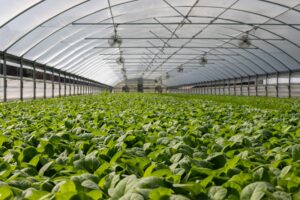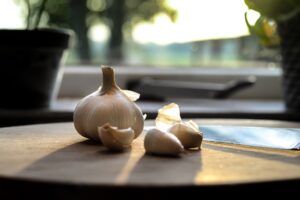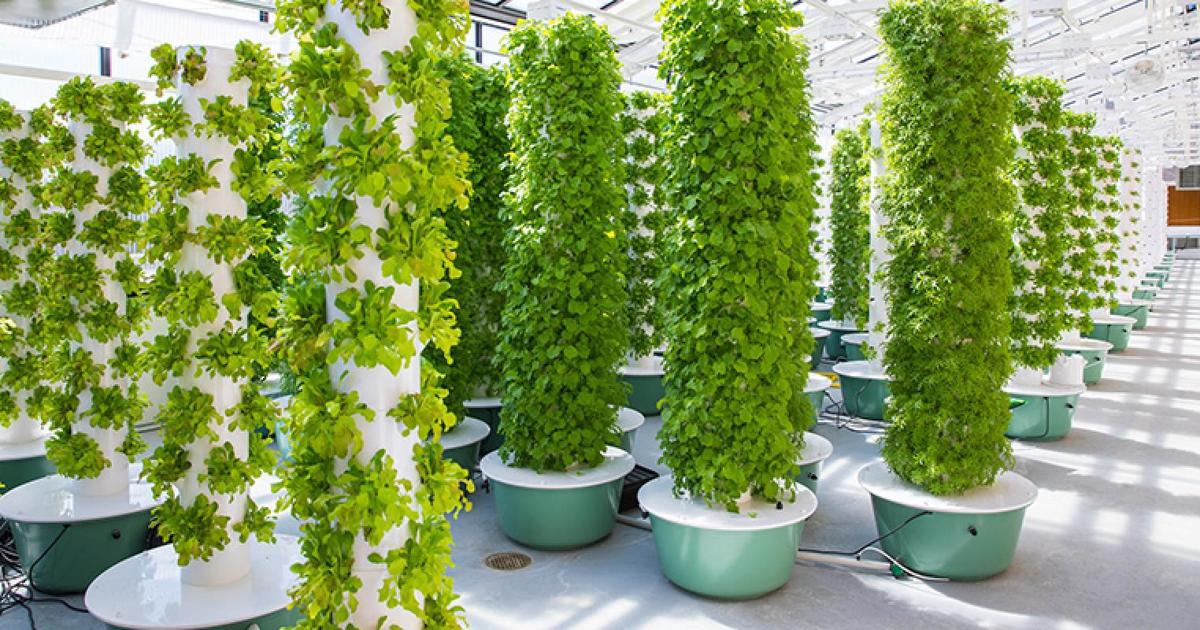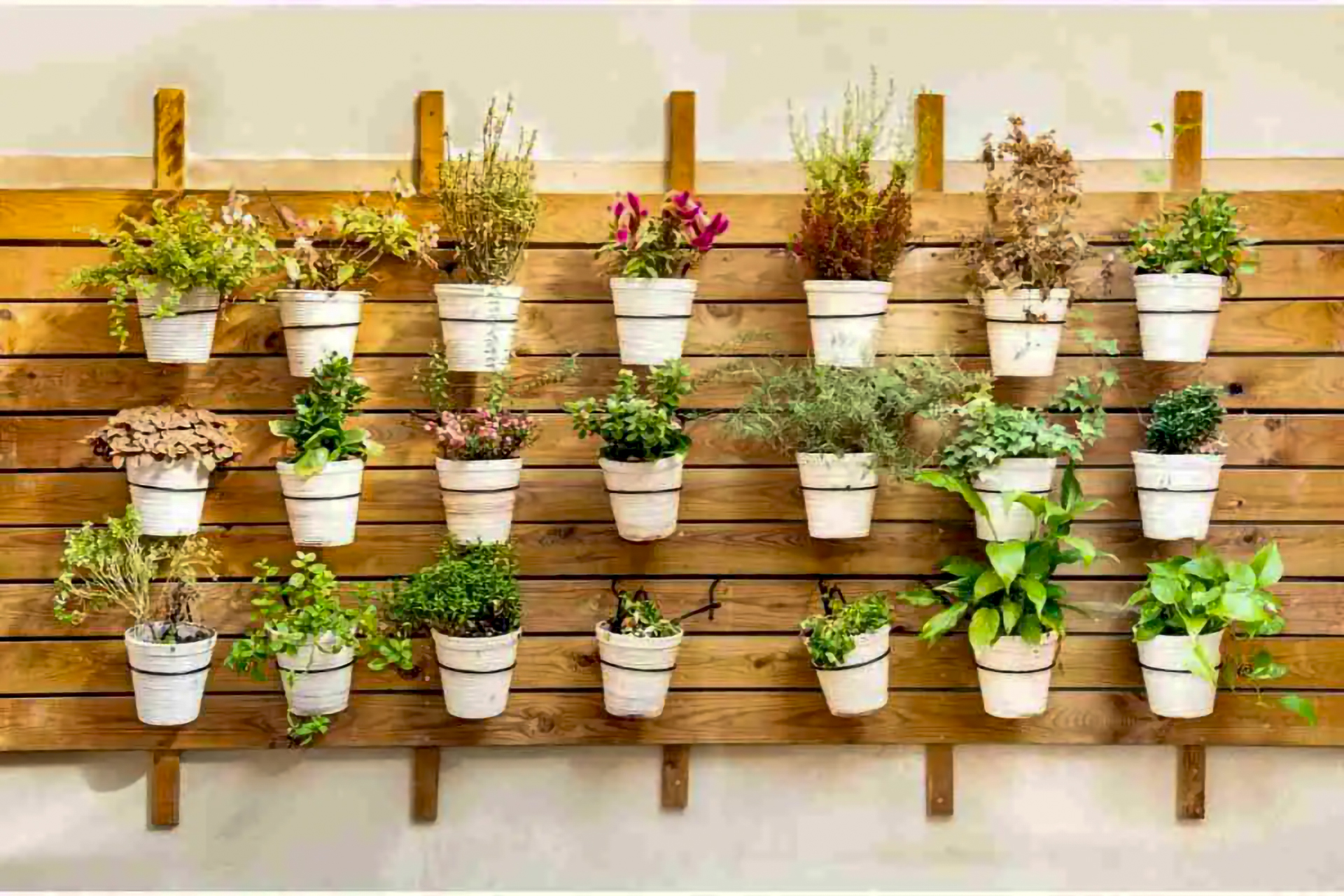The Natural Revolution: Living Walls and Green Facades
Living walls and green facades are the new buzzwords of the architecture and urban design industry. It is an innovative, eco-friendly approach to building that brings nature back into our daily lives. A living or green wall is a vertical garden built on a wall or structure that can truly be a work of art.
It comprises plants grown in soil or other mediums attached to the surface. Green facades are similar, but they grow climbing plants up a trellis system or netting attached to the exterior of buildings.
The concept of living walls and green facades isn’t new; it has been around for centuries. The Hanging Gardens of Babylon, one of the Seven Wonders of the Ancient World, were thought to be an example of this style.
But it gained traction again during the 20th century when French botanist Patrick Blanc invented modern living walls with his patented hydroponic systems. Today’s building owners and designers have embraced this idea because it offers so many benefits while being aesthetically pleasing at the same time.
The Benefits of Living Walls and Green Facades
Living walls and green facades are becoming increasingly popular in architecture and urban design due to their numerous benefits. In this section, we will explore the various advantages that these green structures offer.
Improving Air Quality and Reducing Pollution
One of the most significant benefits of living walls and green facades is improving air quality by reducing pollution. Plants absorb carbon dioxide through photosynthesis, which helps to reduce the number of harmful pollutants in the air, such as nitrogen dioxide and sulfur dioxide. Additionally, living walls can act as a natural filter by trapping particulate matter that may be present in the air.
Providing Insulation and Reducing Energy Consumption
Living walls also provide insulation, which can help to reduce energy consumption in buildings. The plants on a living wall act as a layer of insulation that helps to keep buildings cool during summers and warm during winters. As a result, less energy is needed for heating or cooling the building, leading to lower energy bills.
Enhancing Aesthetics and Promoting Biodiversity
Living walls and green facades can also enhance the aesthetics of a building or space by adding natural beauty. The colors of plants add depth to an area while promoting tranquility.
Furthermore, they offer opportunities for urban biodiversity; plants provide habitats for insects such as bees or butterflies, which are important for pollination. Overall, Living walls have a multitude of benefits ranging from improving air quality by acting as filters trapping particles that may be present in air pollution, and providing insulation against heat transfer, thereby reducing energy consumption bill costs spent on heating/cooling buildings throughout different seasons, enhancing beauty with natural colors while also promoting biodiversity with habitats suitable for insects like bees or butterflies who play vital roles in pollination – it’s no wonder more people are incorporating these structures into their architecture.
Types of Living Walls
Living walls can be categorized based on the type of system they use to hold plants. Each system has its own advantages and disadvantages, and choosing the right one depends on various factors such as space, climate, and budget. Here are some of the most common types of living walls.
Modular Systems
Modular living walls are pre-fabricated panels that contain pockets where plants can be inserted. These panels can be easily installed onto an existing wall or fence, making them a great option for retrofitting a building with greenery.
The modular design also allows for flexibility in plant selection and arrangement, making it easy to swap out plants as needed. This system is popular in commercial settings because it is relatively low maintenance compared to other systems.
Tray Systems
Tray systems are similar to modular systems in that they are pre-fabricated, but instead of having pockets for plants, they have trays that hold potted plants. These trays are then attached to a framework mounted on a wall or fence. Tray systems allow for more flexibility in plant selection than modular systems since any potted plant can be used and moved around as needed.
Panel Systems
Panel systems consist of individual panels with cells that hold each plant’s root ball. The panel is then secured onto a supporting structure using brackets or hooks. Panel systems offer more insulation than other types since the panel creates an air gap between the plant and the wall.
Potted Plants
Potted plants are a simple way to add greenery to a vertical space without investing in an entire living wall system. Pots can be hung on hooks or shelves mounted onto a wall or fence.
This method offers maximum flexibility since pots can be easily moved around and swapped out as needed but it requires regular maintenance like watering and fertilizing. It is also less effective at insulating the wall or reducing pollution than other systems.
Design Considerations for Living Walls
Choosing the right plants for the environment
One of the key design considerations for living walls is choosing plants adapted to the site’s specific environmental conditions. This includes factors such as temperature, humidity, and light levels.
For example, some plants are better suited to cooler, more humid environments, while others thrive in hot and dry climates. It’s important to select plants that will survive and flourish in their new home on a living wall.
Another important consideration is selecting plant species that complement each other visually. A living wall with a mix of contrasting colors and textures can create a stunning visual impact, but it’s important to ensure that these plants will thrive together and not compete for resources.
Irrigation systems
Proper irrigation is critical to maintaining healthy living walls. Without adequate water, plants can quickly wilt and die. Several different irrigation systems are available for living walls, including drip irrigation, misting systems, and recirculating irrigation systems.
Drip irrigation is one of the most popular methods because it delivers water directly to the roots of each plant while minimizing waste. Misting systems are another option but may be less efficient due to evaporative losses.
Recirculating systems can be more environmentally friendly by capturing and reusing excess water. It’s important to choose an irrigation system that suits both the needs of your chosen plant species and your specific site requirements.
Lighting considerations
Living walls require adequate light levels for plants to photosynthesize effectively. The specific lighting requirements will depend on the types of plants used as well as their placement within the wall.
In indoor environments with limited natural light, supplemental artificial lighting may be required to sustain healthy growth. LED grow lights have become increasingly popular due to their energy efficiency and customizable spectra.
On the other hand, living walls that are exposed to direct sunlight may require shading to prevent plants from being scorched by excessive heat. Considering these factors when designing a living wall and selecting appropriate plant species is important.
Maintenance of Living Walls
Living walls are a great way to bring a touch of nature into an urban environment, but they require regular maintenance to keep them healthy and attractive. Here are some things to consider when it comes to maintaining your living wall.
Watering frequency and fertilization needs
One of the most important aspects of maintenance is watering. Living walls need more water than plants in the ground because they are exposed to air on all sides and can dry out quickly. The watering frequency will depend on the plant type, the wall size, and the climate in your area.
You may need to water your living wall daily during hot weather or every few days during cooler seasons. Fertilizing is also important because plants in living walls have limited nutrient access.
You can use a slow-release fertilizer that provides plants with essential nutrients over time or liquid fertilizers that you apply through the irrigation system. Be sure to follow instructions on any fertilizer you use carefully, as too much can be harmful.
Pest control measures
Pests can be a problem for living walls, just as they are for other types of gardens. Aphids, mealybugs, spider mites, and scale insects are some common pests that may attack your plants.
You can prevent infestations by keeping your living wall clean and well-maintained, inspecting regularly for pests, and removing any infected parts immediately. If pests do become a problem, there are several ways to deal with them without harming your plants or damaging the environment.
Some natural controls include introducing beneficial insects like ladybugs or lacewings into your garden or spraying with insecticidal soap made from natural ingredients like fatty acids and potassium salts. Taking care of your living wall will ensure that it stays beautiful and healthy for years to come while improving air quality in urban areas.
Green Facades: An Alternative to Living Walls
While living walls have gained increasing popularity in urban design, they may not always be the best solution for every environment. That’s where green facades come into play.
A green facade is essentially a vertical garden consisting of climbing plants, which can be trained to grow up a trellis system attached to a building’s exterior. These systems provide many of the same benefits as living walls but differ in several important ways.
Definition of Green Facades and How They Differ from Living Walls
Unlike living walls, which require a complex system of irrigation, modular panels, and often special lighting systems to nurture and support them, green facades rely on existing trellis or support structures that are affixed directly to the building’s exterior. The plants themselves are trained to climb these structures using mechanisms such as tendrils or aerial roots.
The main difference between living walls and green facades is their maintenance requirements and flexibility. While living walls require constant maintenance, including watering, fertilizing, trimming, and pest control, green facades mostly care for themselves once established.
Types of Green Facades
The most common type of green facade uses climbing plants that attach themselves to vertical surfaces through means such as suction cups or twining stems. Other types use specialized trellis systems installed either against an existing wall or hung freely from it. These trellises can be made from materials such as metal wires or wooden slats arranged vertically at regular intervals along the wall.
Semi-intensive green facades are another option between traditional planting beds and intensive green roofs. These systems typically feature deeper soil pockets than standard green facades and offer greater opportunities for planting larger species, such as shrubs or small trees.
Benefits, Design Considerations, and Maintenance of Green Facades
Green facades provide many of the same benefits as living walls, including reducing air pollution, providing insulation, and enhancing the aesthetics of a building. They also have some unique advantages over living walls.
For example, they tend to be more cost-effective in terms of installation and maintenance; they require less frequent irrigation and can be easily removed or adjusted if necessary. When designing a green facade system, architects must consider factors such as the building’s orientation, soil type, and exposure to wind or sun.
The design should also consider selecting appropriate plants that will thrive in the given environment while contributing to biodiversity. Maintenance requirements for green facades are relatively low as compared to living walls but may include occasional pruning or training of the climbing plants.
Green facades offer a flexible alternative for greening urban spaces where other options may not be feasible or practical. While they cannot fully replace living walls in all cases, green facades often provide an effective solution that can significantly enhance both human health and environmental quality in urban areas.
Examples of Successful Living Walls and Green Facades
Case studies on successful implementation in urban areas
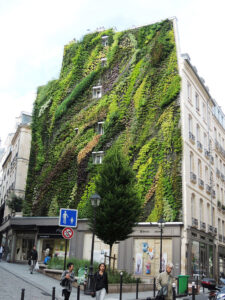
Living walls and green facades have become increasingly popular in recent years as people realize the benefits they bring to cities. One case study that stands out is the “Vertical Garden” on the side of a building in Paris, France. The system consists of over 8,000 plants, which cover an area of 1,500 square meters.
Renowned artist Patrick Blanc designed it, and it has become a major tourist attraction in the city. Another successful example is the “Green Curtain” that hangs from an office building in Sydney, Australia.
The curtain comprises over 11,000 plants and provides shade for the interior during hot summer days. It also helps to reduce noise pollution from nearby traffic, making it a popular destination for people seeking a peaceful environment.
Examples from around the world showcasing different designs
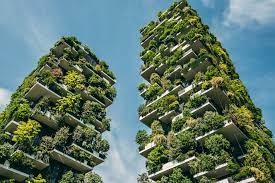
Depending on their environment and purpose, living walls and green facades come in different shapes and forms. For instance, the “Bosco Verticale” (Vertical Forest) towers located in Milan, Italy, use hundreds of trees to create an artificial forest on two high-rise buildings.
This project provides a habitat for wildlife and reduces air pollution levels by absorbing carbon dioxide. In Singapore’s Changi Airport Terminal, 3 building lies a unique installation called “The Green Wall.” This is shown in the header of this post.
Spanning four stories high with over 25 species of ferns and other tropical plants used to create this living wall wonderland near every gate entrance – this wall helped earn Changi Airport numerous awards throughout Asia for its unique design. These examples prove that living walls and green facades serve functional purposes and provide beautiful aesthetics that allow city dwellers to appreciate nature within their urban living space.
Conclusion: The Future of Living Walls and Green Facades
Green is the New Black: The Growing Popularity of Urban Greenery
Living walls and green facades are becoming increasingly popular in urban design due to their many benefits. As more people move into cities, finding ways to incorporate greenery into our everyday lives becomes even more critical. Bringing nature into the built environment can create a more sustainable, healthy, and aesthetically pleasing world.
In recent years, there has been a growing trend toward incorporating vertical gardens and living walls in buildings. They have become a symbol of modernity and sustainability in architecture.
The Future of Architecture: Incorporating Nature at Every Level
In the future, we can expect to see even more innovation in the field of living walls and green facades. Architects are already incorporating them as standalone features and an integral part of building design.
We may soon see entire buildings covered in vegetation or vertical farms that grow crops for local communities. Some architects even design skyscrapers that mimic natural ecosystems using materials like timber instead of concrete.
Looking Forward: A Greener World for All
As we look forward to the future, it is clear that living walls and green facades will play a crucial role in creating sustainable cities that prioritize both aesthetics and functionality. They allow us to mitigate some of the negative impacts of urbanization while promoting biodiversity and improving air quality.
With continued innovation and investment, we can create a greener world for all to enjoy. Living walls and green facades are not just temporary fads; they are here to stay as a vital feature in urban architecture moving forward.
The future looks bright, with endless possibilities for creating functional spaces built around nature instead of against it. We can create a more sustainable, beautiful, and healthier world by incorporating greenery into our urban environments.



